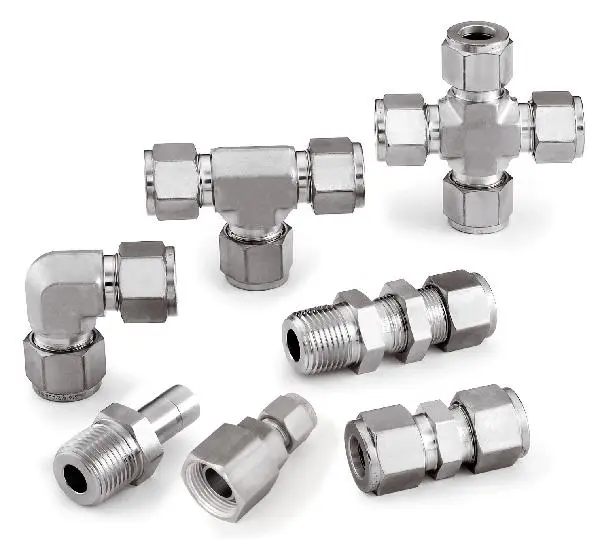
Compression ferrule fittings are one of the most common and versatile methods of connecting metal or hard plastic tubing. Particularly useful for their extreme temperature and pressure capabilities, and their compatibility with aggressive fluids, compression fittings can be seen in systems varying from gas lines in refineries, to the plumbing under your sink.
Compression ferrule fittings are found in applications ranging from chromatography and bomb detection instruments, to medical devices and inkjet printing. Whether it’s the water heater in your home or a pipe transporting hazardous chemicals, all compression fitting applications have several traits in common: they require easy assembly, long life, and absolutely no leaks.
Compression ferrule fitting are made up of the same three basic elements: a compression nut or screw, one or more ferrules, and a compression fitting body. The functioning principle of each component also remains more or less the same between designs: tubing is inserted into the end of the fitting, and the nut/screw is tightened, forcing the ferrule(s) into the fitting body. As the ferrule(s) moves axially into the fitting body, the body’s angled shape radially compresses the end of the ferrule onto the outer diameter of the tubing. It is this radial compression that creates the leak tight seal between the fitting, ferrule, and tubing, and gives the compression fitting its name.


